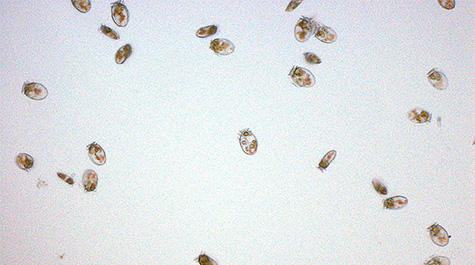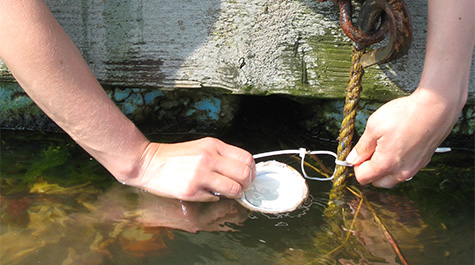Dinophysis Toxigenicity
Title: Nutritional, environmental, and genetic regulation of toxicity and growth in Dinophysis
Primary Investigator: Don Anderson (WHOI)
Personnel: Juliette Smith (VIMS), Mengmeng Tong (Zhejiang U.), Dave Kulis (WHOI), Mindy Richlen (WHOI)
Funding Sources: NSF Biological Oceanography, WHCOHH (NIEHS/NSF), WHOI Coastal Ocean Institute
Abstract: The dinoflagellate genus Dinophysis is important from ecological, evolutionary, and public health perspectives. In the former category, some members of this genus derive their nutrition through a unique, multi-stage process requiring both cryptophyte and ciliate prey. Evolutionarily, the modification of cryptophyte chloroplasts during this complex feeding process and their subsequent utilization for photosynthesis provides an ideal model system for investigations of plastid acquisition and evolution in eukaryotes. From the public health perspective, Dinophysis species are responsible for the vast majority of diarrhetic shellfish poisoning (DSP) cases. DSP is a syndrome associated with human consumption of shellfish that have accumulated Dinophysis toxins (Yasumoto et al., 1980), and less frequently, toxins from Prorocentrum lima (Lawrence et al., 1998). It is a major public health and economic problem for many countries (Boni et al., 1993; Giacobbe et al., 2000) and is among the most important and widespread of the harmful algal bloom (HAB)-associated poisoning syndromes (Van Dolah, 2000).
For decades, many aspects of Dinophysis physiology, toxicity, and genetics have remained intractable due to our inability to grow these organisms in laboratory cultures. As a result of a recent breakthrough, however, this obstacle no longer exists and an array of important experiments and measurements are now possible. The opportunities for major advances on multiple fronts are significant. Here we propose a comprehensive study to investigate nutritional, environmental, and genetic regulation of toxicity and growth in Dinophysis.
Recent Publications:Tong, M., *Smith, J.L., Richlen, M.L., Steidinger, K., Kulis, D., Fux, E., Anderson, D.M. (accepted) Characterization and comparison of toxin-producing isolates of Dinophysis acuminata from New England and Canada. Journal of Phycology.
Smith J.L., Tong M., Fux E., Anderson D.M. (2012) Toxin production, retention, and extracellular release by Dinophysis acuminata during extended stationary phase and culture decline. Harmful Algae 19:125–132.
Fux E., Smith J.L., Tong M., Guzman L., Anderson D.M. (2011) Toxin profiles of five geographical isolates of Dinophysis spp. from North and South America. Toxicon 57:275-287.
Tong M., Kulis D.M., Fux E., Smith J.L., Hess P., Zhou Q., Anderson D.M. (2011) The effects of growth phase and light intensity on toxin production by Dinophysis acuminata from the northeastern United States. Harmful Algae 10:254-264.



